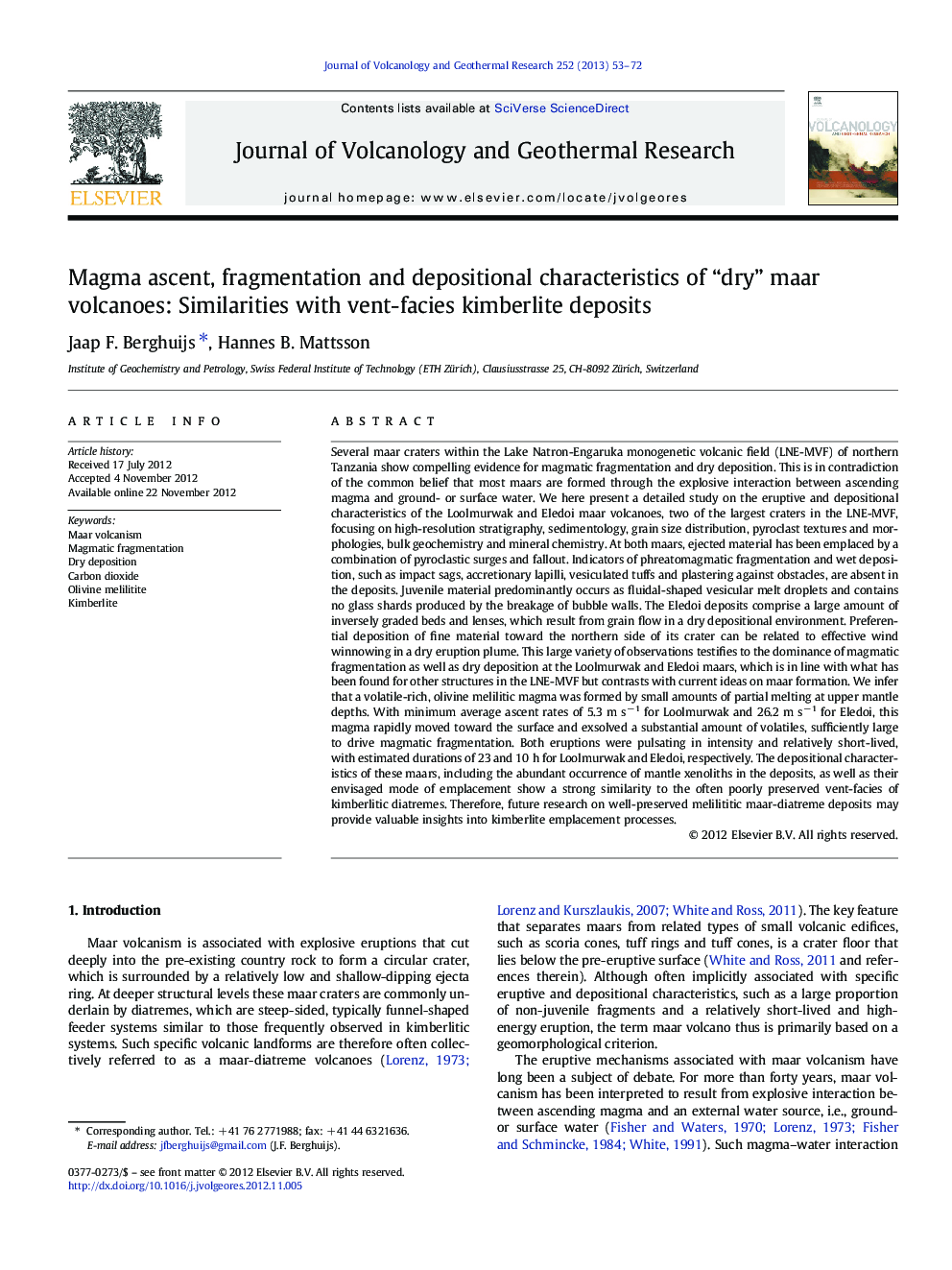| کد مقاله | کد نشریه | سال انتشار | مقاله انگلیسی | نسخه تمام متن |
|---|---|---|---|---|
| 4712531 | 1638369 | 2013 | 20 صفحه PDF | دانلود رایگان |
Several maar craters within the Lake Natron-Engaruka monogenetic volcanic field (LNE-MVF) of northern Tanzania show compelling evidence for magmatic fragmentation and dry deposition. This is in contradiction of the common belief that most maars are formed through the explosive interaction between ascending magma and ground- or surface water. We here present a detailed study on the eruptive and depositional characteristics of the Loolmurwak and Eledoi maar volcanoes, two of the largest craters in the LNE-MVF, focusing on high-resolution stratigraphy, sedimentology, grain size distribution, pyroclast textures and morphologies, bulk geochemistry and mineral chemistry. At both maars, ejected material has been emplaced by a combination of pyroclastic surges and fallout. Indicators of phreatomagmatic fragmentation and wet deposition, such as impact sags, accretionary lapilli, vesiculated tuffs and plastering against obstacles, are absent in the deposits. Juvenile material predominantly occurs as fluidal-shaped vesicular melt droplets and contains no glass shards produced by the breakage of bubble walls. The Eledoi deposits comprise a large amount of inversely graded beds and lenses, which result from grain flow in a dry depositional environment. Preferential deposition of fine material toward the northern side of its crater can be related to effective wind winnowing in a dry eruption plume. This large variety of observations testifies to the dominance of magmatic fragmentation as well as dry deposition at the Loolmurwak and Eledoi maars, which is in line with what has been found for other structures in the LNE-MVF but contrasts with current ideas on maar formation. We infer that a volatile-rich, olivine melilitic magma was formed by small amounts of partial melting at upper mantle depths. With minimum average ascent rates of 5.3 m s− 1 for Loolmurwak and 26.2 m s− 1 for Eledoi, this magma rapidly moved toward the surface and exsolved a substantial amount of volatiles, sufficiently large to drive magmatic fragmentation. Both eruptions were pulsating in intensity and relatively short-lived, with estimated durations of 23 and 10 h for Loolmurwak and Eledoi, respectively. The depositional characteristics of these maars, including the abundant occurrence of mantle xenoliths in the deposits, as well as their envisaged mode of emplacement show a strong similarity to the often poorly preserved vent-facies of kimberlitic diatremes. Therefore, future research on well-preserved melilititic maar-diatreme deposits may provide valuable insights into kimberlite emplacement processes.
► We investigate the crater rim stratigraphy of two melilititic maar volcanoes.
► Both maars show compelling evidence of magmatic fragmentation and dry deposition.
► Emplacement is characterized by rapid magma ascent and short eruption durations.
► Eruptive processes and deposits strongly resemble those of kimberlite diatremes.
Journal: Journal of Volcanology and Geothermal Research - Volume 252, 15 February 2013, Pages 53–72
